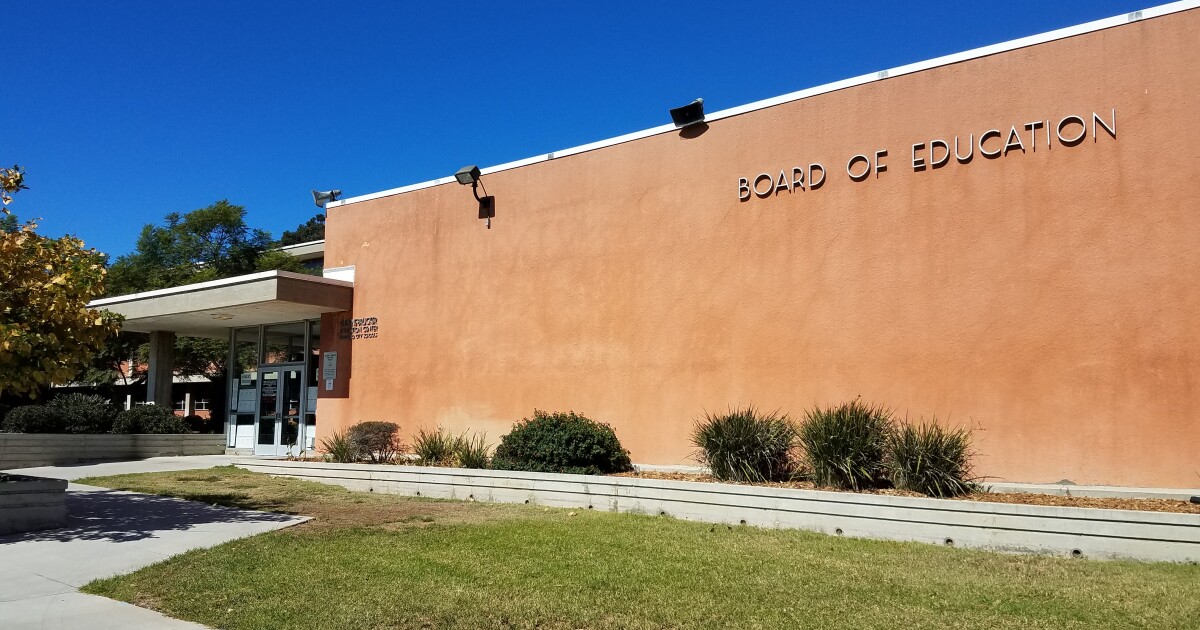
Voters will decide in November whether to change how San Diego Unified School District board members are elected, going from an at-large general election to one in which voters would pick board members by districts.
The City Council unanimously approved a ballot measure July 7 that, if passed, would establish such by-district elections for San Diego Unified in both the primary and general elections.
Currently, only primary school board elections are by district — which means people vote only for candidates within their sub-district. The top two vote-getters from each sub-district go on to the general school elections, which are at-large, meaning voters in all of San Diego Unified decide the winner of each sub-district.
The school district’s election process is dictated by the city charter, not the school board. The ballot measure seeks to change the city charter.
Several City Council members said they support having district-only elections for San Diego Unified. Council member Barbara Bry said the ballot measure is a “big step forward” in giving sub-districts more say in who represents them, and she hopes it will encourage more grassroots candidates to run for school board.
City Council members are elected by district only.
The measure came about thanks to Parents for Quality Education, a San Diego-based public interest group that sued the city in September 2018 to try to get rid of at-large school board elections.
The organization argued that at-large elections are discriminatory in that they prevent people of color from getting elected to the school board, particularly Latino and Asian Pacific Islander candidates. The group’s advocates say at-large elections give more voting power to an overall white-majority electorate and dilute the power of people of color in sub-districts where they make up a majority.
Parents for Quality Education also believes that San Diego Unified’s at-large elections violate the California Voting Rights Act of 2001, which says at-large elections are illegal if they hinder the ability of members of a protected class, including certain racial groups, from electing candidates of their choice.
Tom Keliinoi, president of Parents for Quality Education and a former school board candidate, said every voter — not just people of color — is disenfranchised when people outside that voter’s sub-district can help pick the representative of that district.
“That really disenfranchises everyone in ... every district. It’s unfair and it’s unconstitutional,” Keliinoi said.
San Diego Unified’s five-member board currently has three white members, one African-American member and one Latino member. Meanwhile, 24 percent of the school district’s 102,000 students are white, 44 percent are Hispanic or Latino, 7 percent are African-American and 10 percent are Asian. Other district students are Filipino, American Indian or multiracial.
Board member Sharon Whitehurst-Payne, who is African-American, represents southeastern San Diego, and board member Richard Barrera, who is Latino, represents south-central San Diego.
At-large election campaigns are bigger and more expensive than by-district election campaigns and tend to favor incumbents and candidates with more financial resources.
San Diego Unified board President John Lee Evans, who is not running for re-election this year, said he would not be opposed to having district-only elections.
But Evans said one advantage to having at-large elections is that board members are held accountable to the entire city, rather than just to their own sub-district.
He added that he doesn’t believe by-district elections would eliminate the influence of special interests, since groups such as unions or charter school associations could contribute campaign funds just as easily to candidates in by-district elections.
Many school districts and other agencies across the state have been switching to by-district elections, some after receiving threats of lawsuits alleging violations of the California Voting Rights Act.
But school boards have been slow to diversify even after adopting by-district elections. Some say that’s partly because dividing elections into sub-districts can fracture communities of color or isolate majority communities of color to a few sub-districts, rather than the district at-large.
A majority vote is required to pass the San Diego ballot measure in November. ◆
"board" - Google News
July 11, 2020 at 02:45AM
https://ift.tt/3fijRpF
San Diego voters will decide on school board election reform in November - pbmonthly.net
"board" - Google News
https://ift.tt/2KWL1EQ
https://ift.tt/2YrjQdq
Bagikan Berita Ini














0 Response to "San Diego voters will decide on school board election reform in November - pbmonthly.net"
Post a Comment